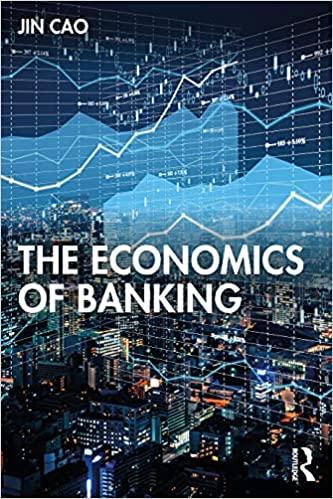Following Exercise 4: now we exclude the possibility of the sunspot bank run equilibrium that is characterized
Question:
Following Exercise 4: now we exclude the possibility of the sunspot bank run equilibrium that is characterized in Exercise 4 (a) and assume that patient consumers only withdraw at \(t=1\) if their expected return at \(t=2\) is too low. Exercise 4: Consider the equilibrium with intermediation, as in Exercise 2 (d) in which banks offer consumers the deposit contracts \(\left(c_{1}^{*}, c_{2}^{*}\right)\) at \(t=0\). Exercise 2 (d): (d) Suppose there is a competitive banking sector in the economy, in which banks take consumers' endowments as deposits at \(t=0\) and allocate between the two technologies. Consumers withdraw \(c_{i}\) at \(t=i\) according to their type \(i\).
Suppose, at the beginning of \(t=1\), an unexpected pandemic hits the economy and many consumers-including some of the patient consumers-are infected and hospitalized so that they need to consume in \(t=1\). It is known to the public that a population \(f\) (with \(0
(a) Explain why there exist two (Nash) equilibria which are consistent with rational behavior for all agents: one in which only the early consumers withdraw at \(t=1\), and another one-a sunspot equilibrium-in which everyone withdraws at \(t=1\), no matter what type he or she is. What is the individual consumption level in the latter equilibrium? Does the latter equilibrium depend on late consumers' belief? Does the existence of multiple equilibria depend on the value of \(\delta\) ?
(b) Propose a mechanism that can eliminate the bank run equilibrium. Explain how it works.
(c) During the 2007-2009 crisis, several central banks purchased huge volume of securities, hoping to prevent price of illiquidassets from falling too much. Explain why such unconventional policy helps eliminate panics in the banking sector.
Now, in the economy with financial intermediation (banks), as is specified in Exercise 2 (d), suppose that in \(t=0\) it is a public knowledge that a bank run happens in \(t=1\) with probability \(\sigma\) , \(0<\sigma<1\). Assume that banks are perfectly competitive so that only those whose deposit contracts maximize consumers' expected utility will get deposits. Show that a bank's investment in liquid assets in \(t=0\) is higher than that in Exercise 2 (d), and it increases with \(\sigma\). Interpret.
i. Show that banks can replicate the optimal solution achieved in (a) i.
ii. Compared with the result in (b), how can banks improve social welfare in the economy?
Step by Step Answer:






